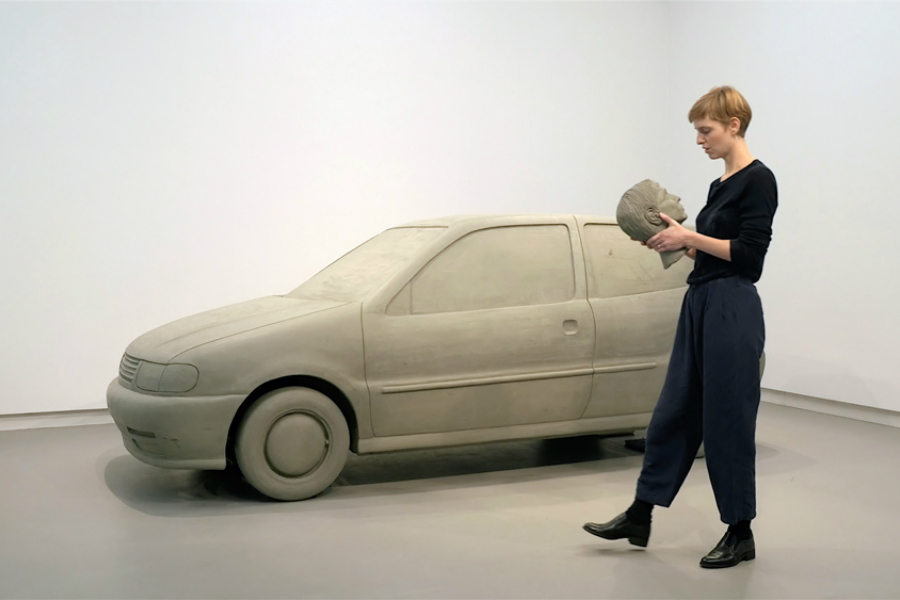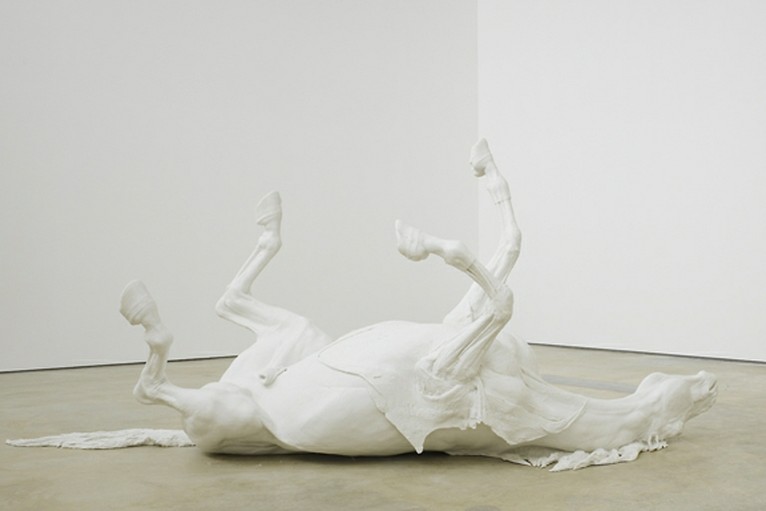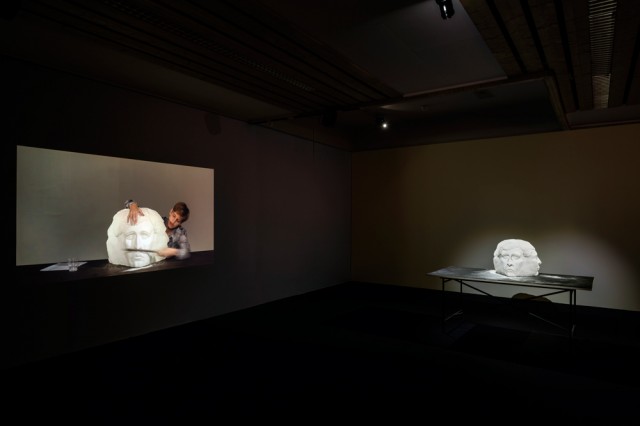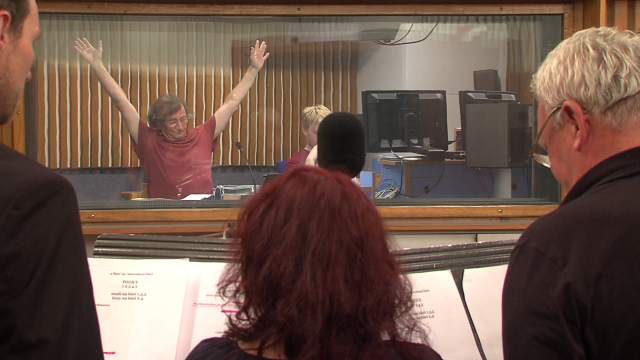Bristol Overview: Emotional Archaeology @ Arnolfini; Others and I, And Instructions For Use of Jiří Kolář @ Spike Island

C. James Fagan sees three exhibitions across four sites in Bristol, provoking thought on memory, parental love, and the “geometry of love”…
Ever feel like a ghost? I’m having one of those moments. At 6am in my mainline train station in the glare of bright lights, the black of the night clinging to the windows. People gather in business dress, separate despite heading in the same direction.
I’m heading towards Bristol to see new exhibitions at Arnolfini and Spike Island. Nothing unusual, for that’s what I do — see art and write about it. What makes this different is that Bristol is near where I lived and studied for five years. Newport just over the bridge there.
It’s close enough to feel the ghosts of the past nearby and to read more into the title of Daphne Wright’s exhibition Emotional Archaeology: suggestive of artwork that glides in the gossamer outlands of memory, where the experience that was meets the experience that is. I’ll find out soon enough, as I wait the arrival of my fellow journalists in the Arnolfini cafe, remembering a time a friend had a major laughing fit, thinking about the rest of the day. Soon we meet Josephine Layton, curator of this exhibition, and she tells us about the nature of the show and about the artist.
Daphne Wright was not a name I was familiar with, and it becomes clear that I’m going to receive a crash-course on a 25 year career. Of an artist who decided to create a world independent of her contemporaries, the YBAs.
Layton elegantly describes Wright as an archaeologist, a historian. Someone who carefully demands describes a world where the micro is the macro. Like an archaeologist, Wright picks away at layers to reveal meaning and understanding.
It’s very evocative. You are struck by the animal figures. A horse lies on its back, hoofs in mid-gallop (Stallion (2009)); its body rendered in marble dust and resin, like the result of a giant plaster cast. This space is shared by the bodies of a lamb (Lamb (2006)), monkey (Primate (2009)) and swan (Swan (2007)). Their bodies fail — and fall — in different positions. These animals are watched over by sets of watercolour portraits (Markers (2009)), which seem even more disconnected from life than the supposedly dead alabaster bodies they look over. For a moment, I wonder whose world I occupy, which world is valid. At the time l would have to say it was the animals’ world and I was merely an inverted intruder.

Upstairs, I’m confronted by a set of blank clay faces (Clay Heads (2014)). They look like children’s drawings, like a child’s own depictions of itself. Nearby, two much more sophisticated sculptures of children are sat side-by-side on a table. These children have their eyes closed, as if the Clay Heads have matured into something else, something less naive; suggesting the adult within the child. This idea is reinforced by two accompanying videos, I Am the Beginning and If You Broke Me (2014), where children with painted faces speak text, which are at once sinister and plaintive.
It’s a complex world which Wright has asked me to inhabit; further compounded by Domestic Shrubbery (1994): a wallpaper pattern of plaster hearts accompanied by a female voice mimicing the call of a cuckoo. Associations come rushing in — the lattice becomes a gilded cage, made by a parent unwilling to allow a child to grow, or equally a child unwilling to leave the parents’ embrace. It’s as if this piece was a warning about the fragile nature of parenting and of loving. The whole floor appears to be a mediation on the nature of being a parent.
This exploration of parental bonds is carried through into the final piece at the Arnolfini. Ascending a set of stairs, almost like going into the attic, I discover I Know What It’s Like (2012), which features an elderly woman who intones a kind of infantile language. Sounding out phonetics — “Ma ma baba” — what at first appears simple is in fact a complex system to help others to begin understanding language.
Leaving this wise woman to impart her knowledge upon the generations below her, I return to the lobby where my fellow journalists and I are to be taken to the second half of Wright’s exhibition. Like willing hostages, we bundle into the back of a minivan. We are driven through Bristol, and everybody in the cab has a piece of personal or social history to recount.
Our destination is a National Trust property, Tyntesfield. Holly, a fellow writer, tells us about the last owner of the house, Lord Wraxall, who retreated further and further into the house, until the only rooms he occupied are the rooms which are now occupied by Wright’s artworks. Perhaps occupied is the wrong word, as the pieces share and complement the space they inhabit.

After a short walk through the grounds and through the multifaceted building — which reminds me of places like Gormenghast or Hogwarts — we come across a large plaster head of a bull (Death Mask, Horace (2009)), in the middle of an ornate room, it’s tongue poking out of its mouth. Startling as this is, it’s nothing compared to the two emotionally-charged bodies that lay in an anteroom.
Stillborn (2003) and Stillborn, The Brute (2003) lay on their sides, as if they’ve just been dragged in from a nearby field. Connections between Wright’s sculptures and the history of Tyntesfield become solid, as Tyntesfield was once famed for breeding cattle. I see these sculptures as a memorial to Lord Wraxall, who, like the bulls, was the last of his breed.
Seeing Wright’s piece’s in the surroundings of a stately home, enhances and highlights the concerns of Emotional Archaeology. We are surrounded by history, both domestic and broader. The cornices that run around the Boudoirs ceiling recollect Domestic Shrubbery, bringing with it a sense of domestic claustrophobia, even within the large rooms contained in Tyntesfield.
At the end of the Emotional Archaeology, we bundle back into a taxi and are driven to Spike Island to see two shows which are still in the process of installation. Of course, my own personal emotional archaeology comes to the fore and I remember visiting here as part of a uni visit.
Inside Spike Island, everything felt bright, clear and open. Objects float around the space on shelves and tables, and appear in films on flat screen TVs, depicting a woman performing with those objects. This is Hedwig Houben’s Others and I; her first solo show in the UK. Unlike Daphne Wright, Houben creates a world where the objects around us have shifting meanings. The various plaster objects — a car, shapes, a head, a trainer — that live on shelving units throughout the space exist in order to be manipulated as characters through the exhibition.
Even the shelving units are to be rearranged, reconfigured. Everything feels malleable, and open to change. Nothing is fixed and will alter, depending on the subjective gaze of the viewer. While wondering around Spike Island, it feels like Houben‘s work is waiting to be activated. To be filled with meaning. Which makes me sad that I won’t be able to catch her do just that in a live performance, Personal Matters and Public Affairs, at 8pm, as I’ll be on the train.

Houben’s exhibition is being shown alongside Roman Štětina and Miroslav Buriánek’s Instructions For Use of Jiří Kolář. On entering the space, you see the large projection of a man, enthusiastically directing a small group of people in what seems a brightly light music studio. In front of you, three geometric shapes glow green, yellow and red.
The Czech artist Roman Štětina tells us about his film and the man depicted screen, Miroslav Buriánek. the video serves as an tribute to Buriánek: a teacher and mentor, and director of radio drama for Czech Radio. Štětina’s affection is clear as he goes into detail how he arranged for Buriánek to record another session; this time, readings of instructional poems by the Czech poet, artist and translator Jiří Kolář (1914-2002).
It’s hard not to see this action as Štětina’s attempt to document his appreciation for Buriánek; his own emotional archaeology, as it where. The glowing shapes that inhabit the space are a response to Buriánek’s idea that interaction between people is all a matter of geometry: “The geometry of love”, as Buriánek put it. This makes me think about people forming geometric patterns while they’re in this space, leading to what, who knows. Like Houben’s exhibition, it feels that the work will find multiple completions through the experiences of the individual visitors.
Looking for a place for a quiet thought, I leave Spike Island, not saying farewell to my temporary companions. In a strange set of symmetries, I’m back at a train station, back at the dark bus stop. The next day I’m at work at the same time I arrived in Bristol; my time at Emotional Archaeology, Others and I, and Instructions For Use of Jiří Kolář, quickly becoming another strata of my experience, another day in my increasing history. This article has been my attempt to convert that history into something tangible.
I advise you to do the same.
C. James Fagan
See Daphne Wright’s exhibition Emotional Archaeology at Arnolfini, Bristol, from 30 September until 31 December 2016 — FREE
Don’t miss Daphne Wright In Conversation with Phyllida Barlow on Saturday 3 December 2016, 11am-1pm — £8 / £6 concessions
See Hedwig Houben’s Others and I, and Roman Štětina and Miroslav Buriánek’s Instructions For Use of Jiří Kolář, at Spike Island, from 1 October to 11 December 2016 — FREE
Images, from top: Personal Matters and Public Affairs (2015) video still, performance lecture, Hedwig Houben’s Others and I, Spike Island. All images courtesy Hedwig Houben and Galerie Fons Welters. Daphne Wright: Emotional Archaeology, Stallion, 2009, Arnolfini 2016.Imitator Being Made (2015) Lofoten International Art Festival: Disappearing Acts, 2015. Photography LIAF. Instructions for use of Jiří Kolář (2016) film still, courtesy Roman Štětina, Miroslav Buriánek and Spike Island, Bristol





